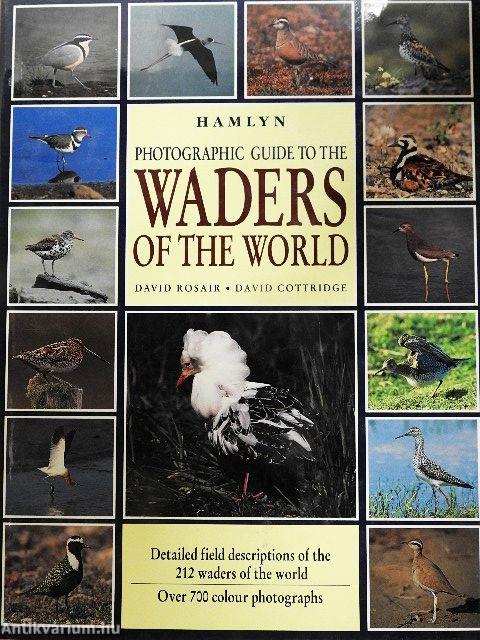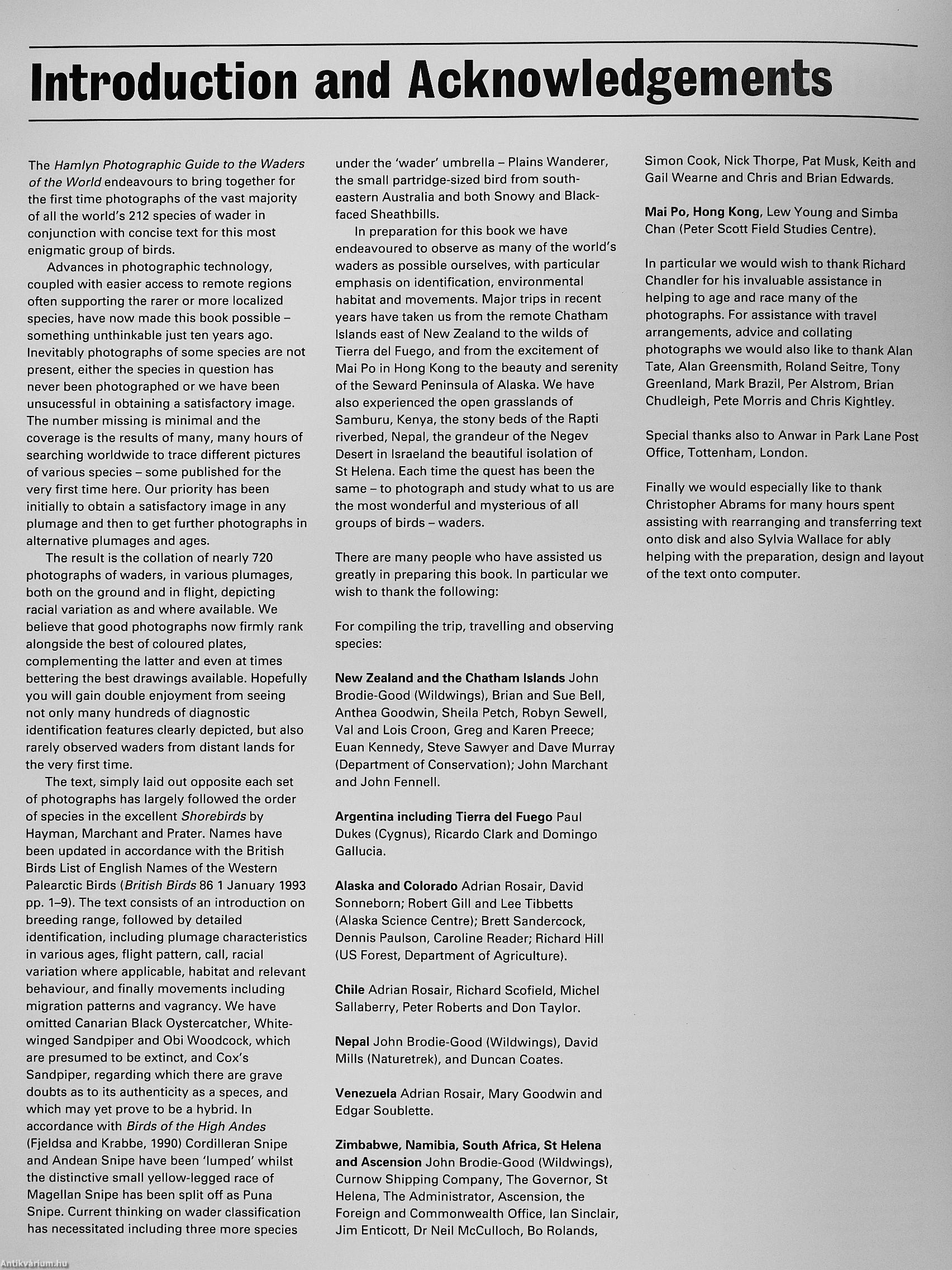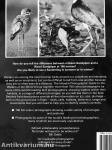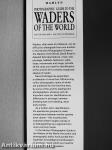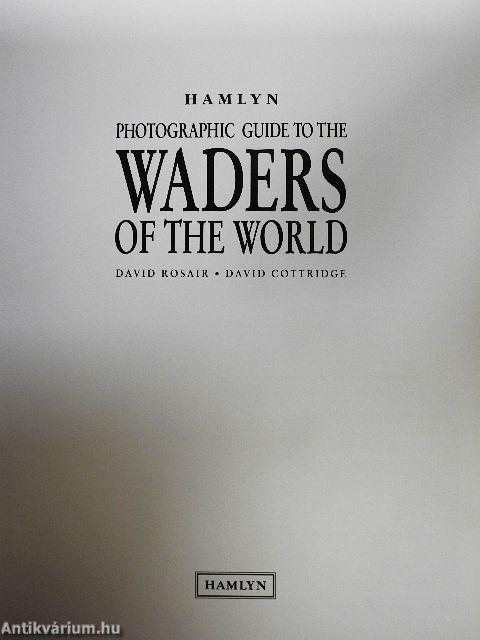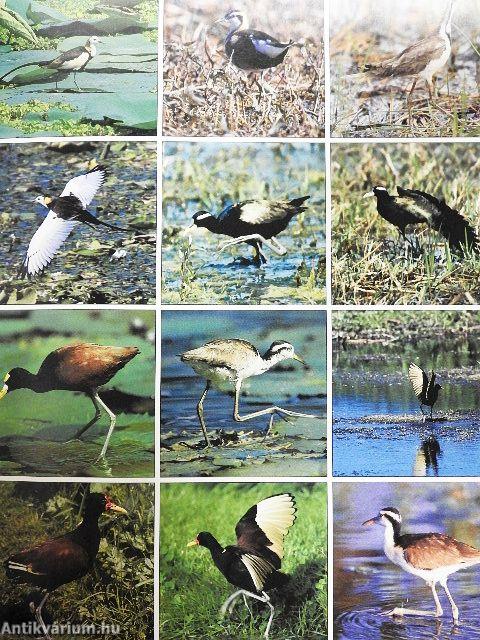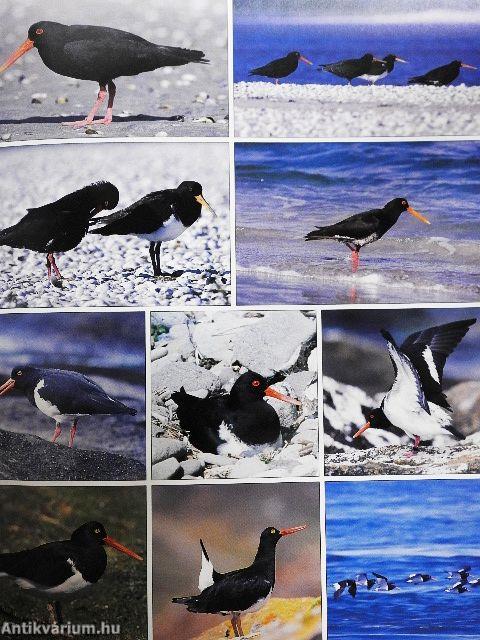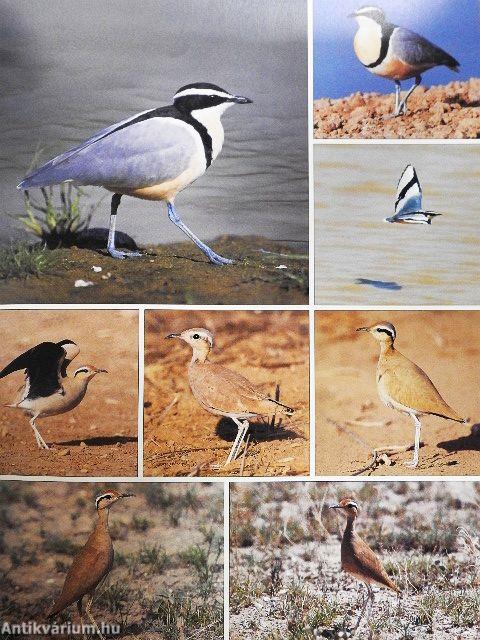1.104.827
kiadvánnyal nyújtjuk Magyarország legnagyobb antikvár könyv-kínálatát

VISSZA
A TETEJÉRE
JAVASLATOKÉszre-
vételek
Hamlyn Photographic Guide to the Waders of the World
Detailed field descriptions of the 212 waders of the world/Over 700 colour photographs
| Kiadó: | Hamlyn Limited |
|---|---|
| Kiadás helye: | London |
| Kiadás éve: | |
| Kötés típusa: | Varrott papírkötés |
| Oldalszám: | 175 oldal |
| Sorozatcím: | |
| Kötetszám: | |
| Nyelv: | Angol |
| Méret: | 29 cm x 22 cm |
| ISBN: | 0-600-58475-5 |
| Megjegyzés: | Színes fotókkal. |
naponta értesítjük a beérkező friss
kiadványokról
naponta értesítjük a beérkező friss
kiadványokról
Előszó
TovábbFülszöveg
How do you tell the difference between a Green Sandpiper and a Wood Sandpiper at 100 metres?
Are you likely to see a Sanderling in summer or in winter?
Waders are among the most familiar birds around our coastlines and estuaries, as well as on marshland, but can be difficult to tell from one another because they are so often seen at a distance. The Hamlyn Photographic Guide to the Waders of the World brings together more than 700 colour photographs by some of the world's leading bird photographers, showing waders within their habitats, in a range of different plumages, as you will see them in the field. Detailed field descriptions provide all the information on jizz, size, plumage -both on the ground and in flight - races, calls, habitats, behaviour, range and movements that you will need to help you to identify waders correctly.
¦ 700 full-colour photographs showing a wide variety of plumages
and postures
¦ Photographs by some of the world's leading bird... Tovább
Fülszöveg
How do you tell the difference between a Green Sandpiper and a Wood Sandpiper at 100 metres?
Are you likely to see a Sanderling in summer or in winter?
Waders are among the most familiar birds around our coastlines and estuaries, as well as on marshland, but can be difficult to tell from one another because they are so often seen at a distance. The Hamlyn Photographic Guide to the Waders of the World brings together more than 700 colour photographs by some of the world's leading bird photographers, showing waders within their habitats, in a range of different plumages, as you will see them in the field. Detailed field descriptions provide all the information on jizz, size, plumage -both on the ground and in flight - races, calls, habitats, behaviour, range and movements that you will need to help you to identify waders correctly.
¦ 700 full-colour photographs showing a wide variety of plumages
and postures
¦ Photographs by some of the world's leading bird photographers,
many of which are previously unpublished
'Almost unbelievably comprehensive. No birder will want to be without it!' Bill Oddie
'An invaluable photographic reference for every birder'. BIRDWATCH magazine
ISBN 0-600
17806009
-TTTZrr
'I i'l
^ I'M ^'íf
. I I 'I i ,1
HAMLYN
PHOTOGRAPHIC GUIDE TO THE
WADERS
OF THE WORLD
DAVID ROSAIR • DAVID COTTRIDGE
1
i ¦, ' ¦ i. . ; '/
i| ' i' ' !
.<i ¦ Í,,'. i ; i-l .<11 !r i i> : V I' : V !,i 1«
"I : : ; 1-, I I M ¦ ¦ 5
I ¦
!1 ,
' ;' I
!1, |;I
'. • ' , i i
'II,.
1,1 ' I . i ¦¦¦ ; , ' I'll.' ;,.;' ü'i'-' -V II
Waders, often seen at a distance, can be difficult to distinguish from one another. In the Hamlyn Photographic Guide to the Waders of the World, David Rosair's detailed field descriptions, of jizz, size, plumage, habitats, behaviour, calls, races, movements and range, provide all the clues you need for identification of the world's 212 currently recognized species of wader.
David Cottridge has assembled a collection of more than 700 stunning colour photographs, many of which are published for the first time here, by some of the world's leading bird photographers, showing such all-important clues for identification as differences in plumage: between breeding and non-breeding, adult and juvenile.
As a further aid to identification, the species are grouped to make comparisons between similar species even clearer - this is particularly important where ranges overlap or in distinguishing rare vagrants from more common locals.
In the Hamlyn Photographic Guide to the Waders of the World, the author and photographic editor have pooled their expertise, knowledge and enthusiasm to produce a book which is a must for anyone interested in waders. Vissza
Témakörök
- Természettudomány > Állatvilág > Madarak
- Idegennyelv > Idegennyelvű könyvek > Angol > Természettudományok > Egyéb
- Idegennyelv > Idegennyelvű könyvek > Angol > Helytörténet
- Helytörténet > Külföldi > Egyéb
- Helytörténet > Honismeret > Regionális
- Természettudomány > Állatvilág > Állatok evolúciója > Madarak > Vízimadarak
- Természettudomány > Földrajz > Általános természeti földrajz > Vizek földrajza > Egyéb
- Természettudomány > Földrajz > Általános természeti földrajz > Élővilág
- Természettudomány > Földrajz > Kontinensek földrajza > Téma szerint > Növényzet, állatvilág
- Természettudomány > Földrajz > Idegen nyelv > Angol
Megvásárolható példányok
Nincs megvásárolható példány
A könyv összes megrendelhető példánya elfogyott. Ha kívánja, előjegyezheti a könyvet, és amint a könyv egy újabb példánya elérhető lesz, értesítjük.



